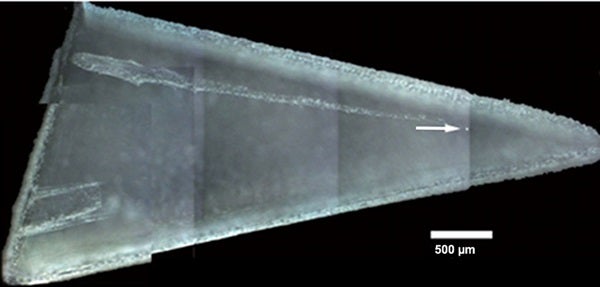NASA’s Stardust mission collected the Wild 2 grains and returned them to Earth in 2006. The fast-moving dust grains were collected in arrays of aerogel, a silicon-based foam that is 99 percent empty space, which slowed the particles from velocities of 4 miles (6 kilometers) per second to a halt over just a few millimeters. Since then, an international team of scientists has been analyzing the samples and the carrot-shaped tracks that they left in the aerogel. Microscopic samples dissected from the grains have been analyzed at facilities around the United Kingdom. Through a range of analytical techniques, scientists have been able to fully analyze the mineralogy and isotopes of the samples.
“The total mass of Comet Wild 2 grains returned is less than a milligram, so these samples are incredibly precious and a considerable analytical challenge,” said John Bridges from the University of Leicester.
The analysis from the Microfocus Spectroscopy beamline at the Diamond synchrotron in the United Kingdom shows that the surface of Comet Wild 2 has been bombarded by particles in the solar wind and micrometeorites throughout its 4.5-billion-year history. This space weathering has deposited nanometer-sized grains of iron metal and reddened the surface of the comet.
“This is the first mineralogical evidence for space weathering that has been identified in the Wild 2 samples that was hinted at by other spectroscopic observations of the comet,” said Bridges. “It adds another piece of the puzzle to our understanding of the life history of comets.”










